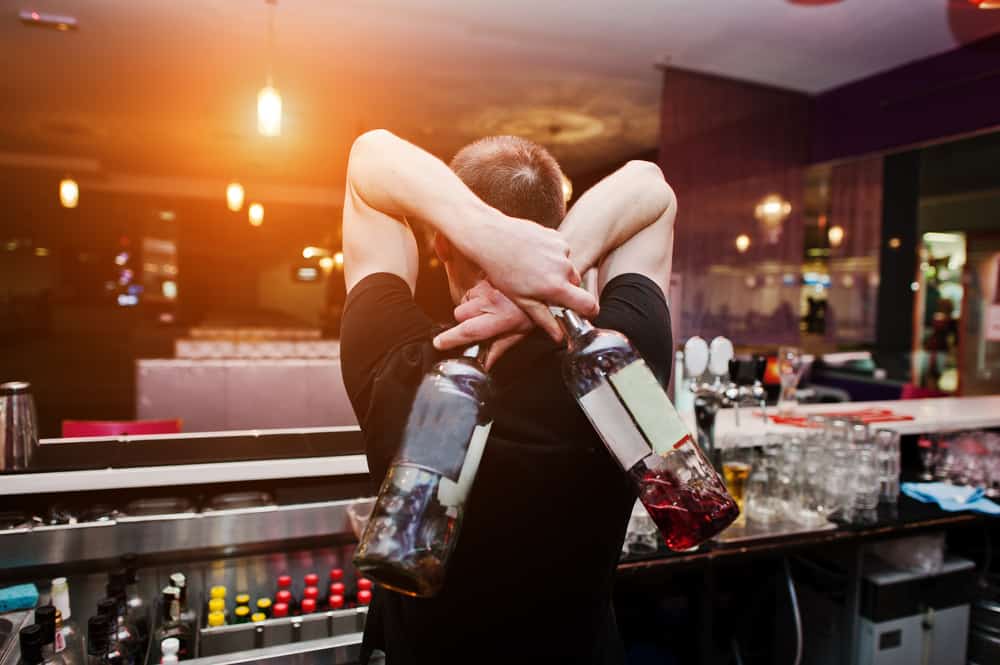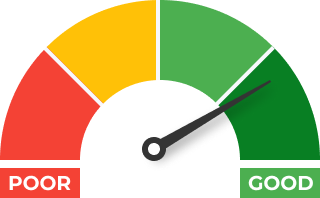One of the biggest challenges of owning and managing a bar is hiring employees you can trust and rely on. But even when you think you’ve hired the right team the risk is still there – bartender theft is one of the top ways your bar can lose revenue. This is why you need to know how bartenders steal, how to catch them stealing, and what preventive measures you can take to prevent and eliminate theft.
Bartender Theft Statistics
Compared to other types of businesses, bars and restaurants are exposed to a greater risk of employee theft. Estimates point that roughly 20% of inventory is lost to free drinks, overpouring and theft.
As beverages are typically the major profit driver for both restaurants and bars, this leads to an average loss of 23% of all upside.
What’s more, the National Restaurant Association estimates the majority of these losses are due to employee theft. Specifically, 75% of inventory loss can be attributed to staff members stealing in various ways – which we’re going to explore below.
Let’s illustrate this with an example:
The average restaurant turns over $1.3 million per annum at a net profit margin of 5 per cent. This is roughly $65,000 a year in pure profit. Therefore, losing 23% equals just under $15,000 in loss and more than $11,000 due to bartender and general employee theft.
So this is a real problem. The way to deal with it in your establishments starts by understanding the various ways bartenders steal.
How Bartenders Steal
Knowingly or unknowingly, unless you’re paying attention, it’s easy for bartenders to steal from you. This can result in a huge loss in revenue for your bar, putting your business at risk. If you’re not closely watching your bar staff, you could be losing thousands of dollars every month.
Whether it’s giving away drinks that haven’t been paid for or stealing cash to put into their pocket, here are some of the most common ways that bartenders steal when they’re working behind the bar:
Bootlegging Liquor
Bartenders can bring in their own bottle of liquor to use when making customer drinks. After payment, they pocket the money from the sale by placing cash in their tip jar. Or they can load the register to skim cash later, claiming an overage to their cash balance at the beginning of their shift.
Faking a Walk-out
Sometimes customers walk out without paying their tab. Dishonest bartenders can take advantage of this scenario in the hope that you’ll believe them. After taking payment from a customer they pocket the cash and blame it on a walk-out.
Free Drinks and Over-Pouring
It’s not uncommon for bartenders to invite friends and family to your bar on a night they’re working, providing free drinks and over-pouring. Unless you make it clear, some of your bartenders may not think that giving away free drinks or over-pouring is considered to be theft and that their actions are impacting your nightly revenue. This practice can quickly add up, resulting in lost sales in just one evening that significantly affects your profit margin.
Juggling
Juggling occurs when a bartender collects payment from two or more customers at the same time. They then enter only half the transaction but place all of the cash into the register. At the end of their shift, a bartender will retrieve the extra cash and place it into their own pocket.
Manipulating Credit Card Receipts
Bartenders can alter your credit card receipts to manipulate tips. After taking payment they alter the receipt by adding a tip or adjusting the tip to a higher amount. When customers notice and make a complaint, it’s your business and reputation that’s on the line.
Short Changing and Pocketing Overages
Deceitful bartenders can short change customers when taking payment, resulting in extra cash in the drawer at the end of the day. They’ll turn in the amount of the sales they’ve rung in, keeping the overage for themselves.
Short Pouring
Short pouring happens when bartenders purposely pour less alcohol into a mixed drink than the recipe calls for. Once they have a surplus of liquor, they’ll sell the saved alcohol to another customer and pocket the cash.
Skimming Table Tabs
Sometimes bartenders work together with your servers to skim tabs. By manipulating orders, they can collect cash payments that they split at the end of the evening.
Substitutions
One of the most common ways for bartenders to steal cash from you is by preparing a drink with a substitution. When a customer orders a call drink for a premium brand of liquor, a bartender instead pours a less expensive brand without you or the customer being aware. The sale is entered for the less expensive brand of alcohol, but your customer is paying for the more expensive drink, with the bartender taking the difference out of the register.
Tapping Up
Dishonest bartenders will use a method called “tapping up” to hide that they’re stealing liquor. They offset the impact by replacing the amount of liquor stolen with water. Unless you’re looking for this type of theft it can go unnoticed for a long time since a few ounces of water in a bottle of alcohol can be difficult to detect.
How to Catch and Prevent Theft
Regardless of the intent or method of bartender theft, the success of your bar depends on being able to catch your employees when they’re stealing from you.
Use these safeguards to identify when theft occurs and prevent it from continuing to happen:
Have a Pour Policy
Over-pouring can quickly cut into your profits, whether it’s done intentionally or unintentionally by your bartenders. By implementing a pour policy not only will you be able to control the pour, you’ll also set a strict guideline for your bartenders to follow. Consider using standard pour spouts with jiggers, ball pour spouts, or computerized pour spouts so that your bartenders can control the pour. Whatever method you use, be sure to train your staff to measure the right amount of liquor for each drink.
POS and Cash Register Procedures
Implement POS and cash register procedures and policies for all your staff:
- The cash drawer should be closed between transactions.
- Keep the area around the cash register or POS clear and free of clutter such as paperwork – messy payment areas can be used to hide money.
- Keep POS passwords safe and secure from your bartenders so they don’t have access to sales reports during their shift.
Lock Up Inventory
Your liquor storage room and wine cellars should be locked at all times, with keys issued only to bar managers. This keeps your inventory safe and makes it hard if not impossible for your bartenders to steal full bottles of liquor.
Spot Check Tabs
Using your POS system, you should be routinely spot checking tabs. Not only do tab checks give you a clear picture of what’s going on in your business, these checks are also a good way to detect theft. Be alert and pay attention to what some of your customers are ordering – if you check the POS record and notice drinks not being rung in, it may be an indication of potential theft.
Reconcile Cash Drawers
Cash drawers can be a prime target for theft. To eliminate the problem and make it harder for your bar staff to steal, at the end of each bartender’s shift you or a manager should be closing each drawer. By taking away the responsibility from your bartenders to reconcile their cash drawers you eliminate the opportunity for employees to directly steal money after they’ve worked their shift.
Policy for Tip Jars
Keep tip jars away from the POS or cash register. If tip jars are placed next to the register, it’s easy for your bartenders to remove money from the drawer and put it into the jar. You’ll also want to consider having a policy in place that prohibits bartenders from making change using the money in the tip jar – if an employee is determined to steal it’s far too easy for them to take cash from the jar and replace it with a larger bill from the cash drawer.
Hire the Right Bartenders
One of the best ways to reduce theft is by hiring the right bartenders. Although you can never be 100% certain that an employee won’t steal from you, use good hiring practices when interviewing potential new staff. Always check references from past employers to be sure they don’t have a past history of theft.
Be Clear About Consequences
Training your employees about theft is essential to running a successful bar. Explain how stealing affects your business and profits and how this relates to your employees. You’ll also want to make sure your bartenders are aware that they’re being monitored and what measures you have in place to prevent theft. Part of this training should include a full understanding of job termination if theft happens. If one of your bartenders gets caught stealing, it’s important that you follow through with the consequence so that you set an example for the rest of your employees.
Rely On Glimpse to Prevent Theft
Glimpse offers an automated AI system that matches video-images of drink movement across the bar counter with POS data. The final reports show all transactions with an image trail of the employee and location, to quickly resolve. Leading chains like Hard Rock Cafe use Glimpse to:
- Eliminate effectively 15% or more in unaccounted sales.
- Improve employee behavior and boost performance.
- Increase speed of service and therefore customer satisfaction.
Learn more in a free 1-on-1 session.
Conclusion
Even if you don’t think you have a theft problem, it’s smart to take a close look at each of your bartenders and how they work during their shift. Knowing some of the methods bartenders use to steal is the first step, so you can take measures to prevent and eliminate theft in your bar.






![How Bartenders Steal [+How to Catch and Prevent Theft] anti theft guide - How Bartenders Steal [+How to Catch and Prevent Theft]](https://www.glimpsecorp.com/wp-content/themes/glimpse/images/blog/anti-theft-guide.png)
![How Bartenders Steal [+How to Catch and Prevent Theft] Bartender 01 - How Bartenders Steal [+How to Catch and Prevent Theft]](https://www.glimpsecorp.com/wp-content/themes/glimpse/images/blog/Bartender-01.jpg)


 +1 (786) 292-2373
+1 (786) 292-2373 insights@glimpsecorp.com
insights@glimpsecorp.com





